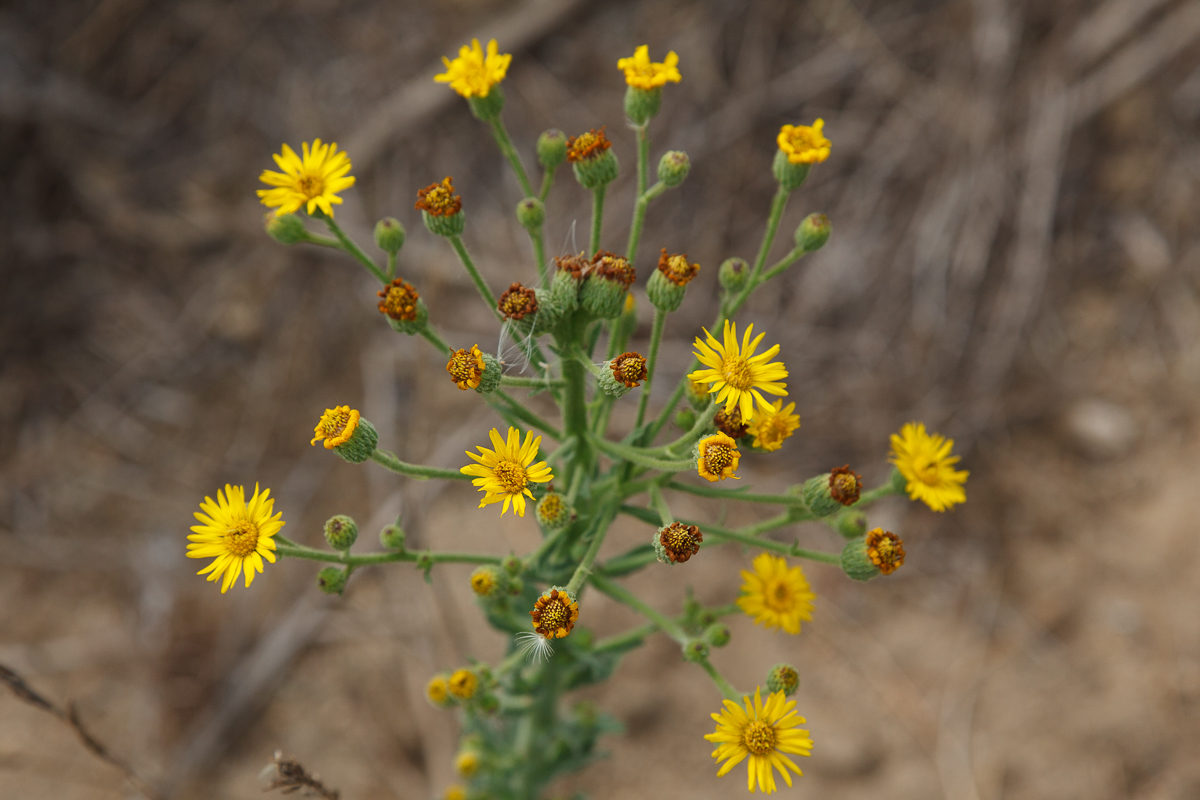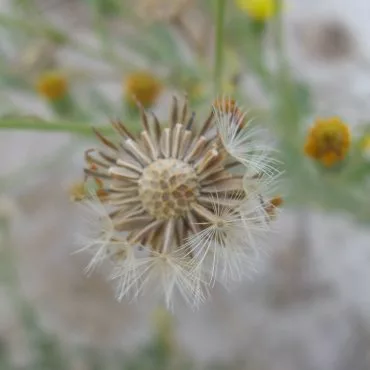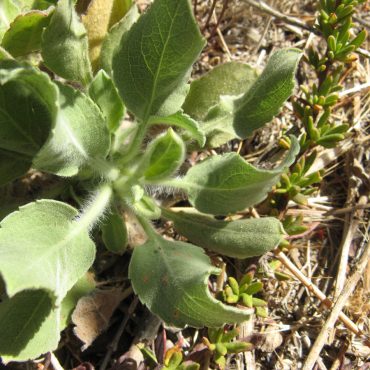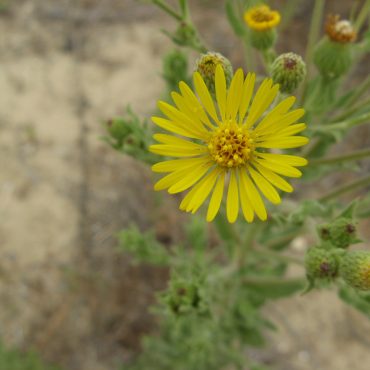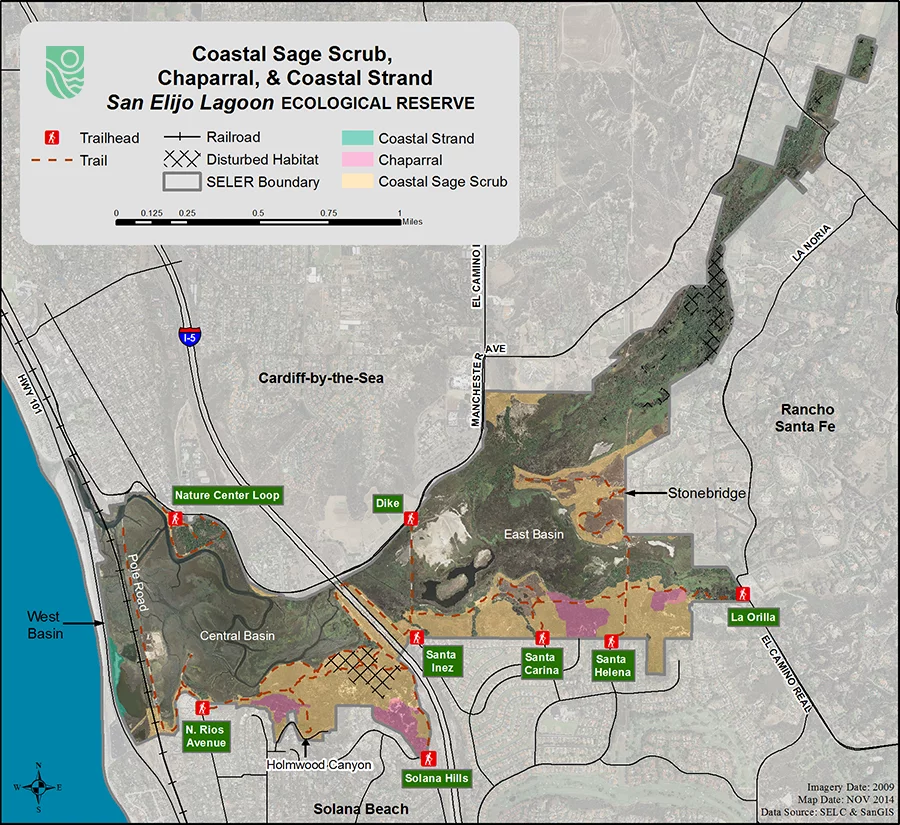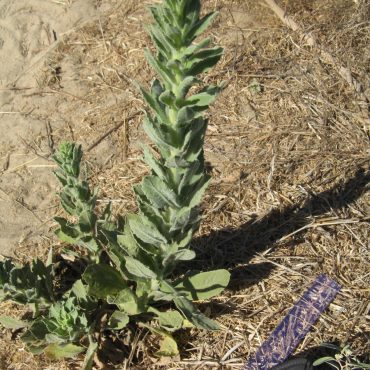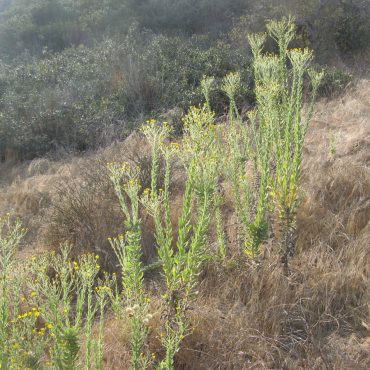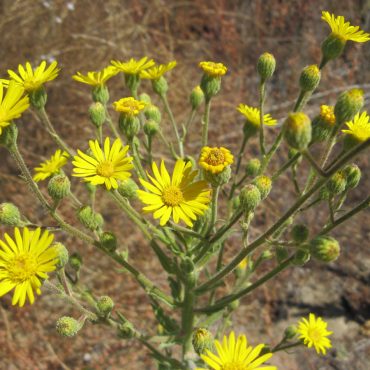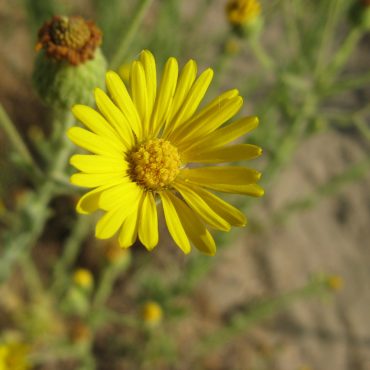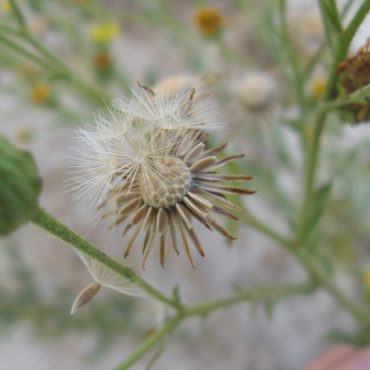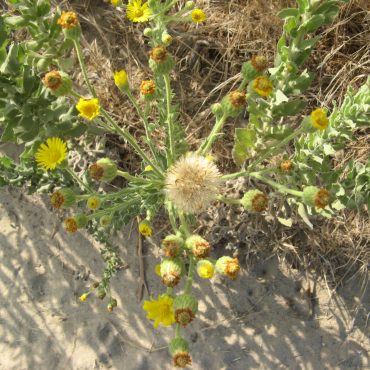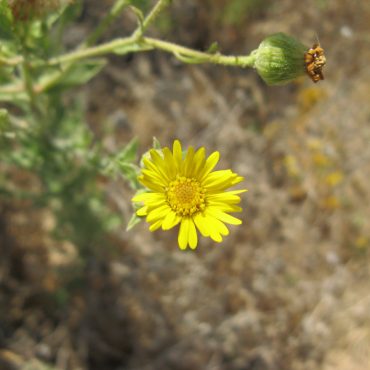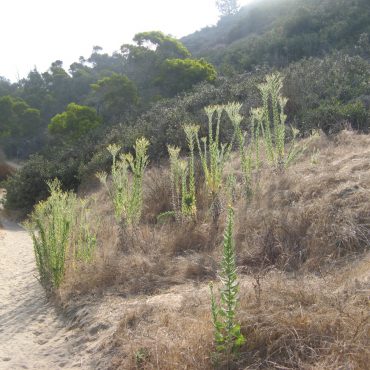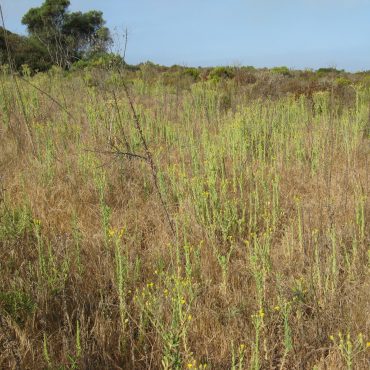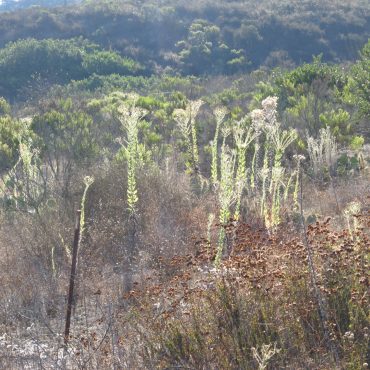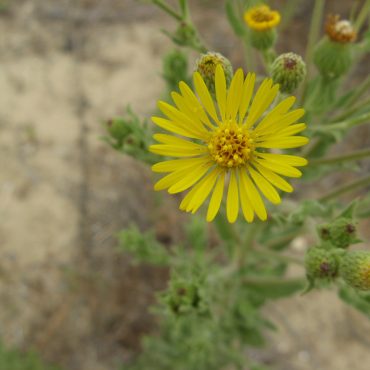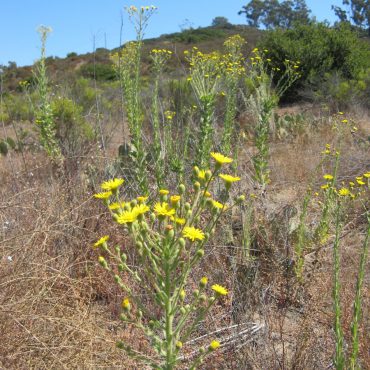Description
2,4,43,59
Telegraph weed is a tall, upright annual, biennial or short-lived perennial. The main stem grows to 6 feet from a basal rosette of leaves. The stem is unbranched below, with numerous short lateral branches near the top. It is bristly with both glandular and non-glandular hairs.
The size and shape of the leaves are variable, even on a single plant. Leaves vary from less than 1 inch (2.5 cm) to more than 3 inches (8 cm) long; they are oblong or ovate. Margins are somewhat wavy and toothed. Rosette leaves have a petiole. Lower leaves have ear-like projections at their base. Leaf size and petiole length decrease upward from the base of the stem. Upper leaves lack a petiole. Leaves are soft with hairs, many of which are glandular; leaves are sticky with a strong smelling resin, resembling camphor or, to some, creosote. This pungent odor may be the best way to identify an uncertain plant.
Yellow flower heads are daisy-like, usually ½-¾ inches (10-20 mm) in diameter. The eye of the daisy consists of 20 or more yellow disk florets, each of which has both male and female reproductive parts; the surrounding corolla consists of 20-30 yellow ray florets, which are female only. The petals of fertilized ray florets curl back tightly against the edge of the flower base – making it look like a lady wearing rollers. The main bloom period is in the fall, but flower heads may be found all year.1
Telegraph weed is unusual in having two types of seeds. Seeds produced by the disk florets are elongate, less than a ¼ inch (6 mm) in length with a terminal tuft of white/tan bristles (a pappus) somewhat longer than the seed. Seeds produced from the ray florets are more triangular and lack the bristles. Seeds from the disk florets are wind dispersed and may be carried some distance from the parent plant; they germinate rapidly. Seeds from the ray florets fall close to the parent plant and germinate more slowly.47

